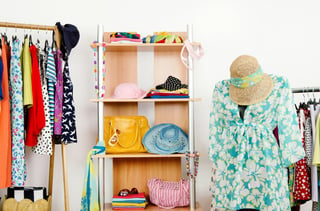 Cross merchandising is a proven winner when it comes to increasing sales across all types of retail stores. You probably know that part, but it's actually a double win because it also adds value for customers.
Cross merchandising is a proven winner when it comes to increasing sales across all types of retail stores. You probably know that part, but it's actually a double win because it also adds value for customers.
Although some people enter your store knowing exactly what they want, an increasing number of shoppers arrive expecting you to guide them toward products of potential interest. They've actually been trained from their online experiences ("other customers bought this item") to expect similar help in retail. And although some people are really good at visualizing how various items should or could work together, a surprising number of people need your help with this.
Cross merchandising solves a buyer's problems.
This boosts customer satisfaction and loyalty in addition to sales because – did you know this? – shoppers don’t buy products, they buy solutions. Who doesn’t appreciate a little help simplifying their life?
It’s easy to think of effective cross merchandising examples:
- Sunscreen and flip-flops next to swimsuits
- Tasty cheese samples next to wine
- Washer fluid with windshield wipers
- Scoops and boxes of cones next to the ice cream
- Colorful bangles with fun summer T-shirts
You get the idea. To be truly effective, though, the items you pair must relate obviously to one another. If it’s a puzzler for shoppers, they won’t waste time on it.
Give customers a reason to explore other items.
Rather than just pairing items together, you can take it a step further by setting up real-life displays. Along with displaying cooking ingredients that go together, try providing take-away recipes. Or set a table with the items. Set up a tent and surround it with sleeping bags, a camp stove, freeze-dried foods, insect repellant, etc. – all stocked within reach.
Demos work well, too. That new panini grill? Toast up some sandwiches, hand out bite-size samples, and watch customers snap up the artisan bread and cheese stocked in the display. (The wonderful aroma will draw shoppers to your display, too.)
Adding a “how to” component helps customers understand what to do with new products they may not be familiar with, too. That encourages them to try additional products.
You can also pair shopper favorites with new or trendy products in the same vertical. This introduces new items and gives them “credence” at the same time.
Cross marketing thrills customers by adding convenience, too.
You go to the store to buy lettuce but forget the salad dressing – unless, there it is, right next to the veggies. Or you buy all the items you need to create a killer new outfit, including that perfect necklace you didn’t intend to buy, thanks to the suggestive grouping on the mannequin.
The key – as with all things retail – is careful advance planning. Random groupings, irrelevant placement, or over-filled displays with too many options will be counter-productive because they will be confusing or look cluttered instead of enticing.
On the plus side, you can use product groupings to boost sales throughout your store. Use your planogram to determine where to place these groupings. (Hint: endcaps or similar display types are big eye-catchers.)
We see cross merchandising every day, but are your customers seeing enough of it in your store?
